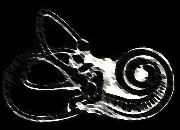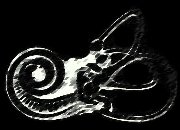Blood Pressure
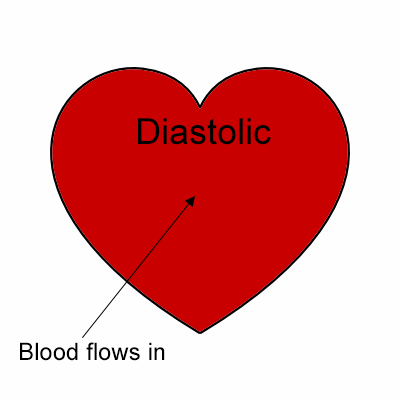
What is Blood Pressure?
As you know, the heart is the driving force behind changes in the flow of blood. (The anatomy and physiology of the heart are not within the scope of this website, so the following is clearly an overgeneralization.) You can consider every heartbeat as consisting of two stages:
- The heart rests and fills with blood (diastole)
- The heart contracts and expells blood (systole)
Clearly there will be differences in the rate of blood flow when the heart is at rest compared to when the heart is actively expelling blood. These differences are measured as the pressure the blood exerts on the walls of the arteries (arteries carry the oxygenated blood that is pumped out by the heart). Each stage, diastole and systole, are measured, which is why blood pressure readings consist of two numbers.
The following may help in trying to remember which stage is which: the first syllable of diastole or diastolic sounds like "die," and the heart is certainly at rest in those who have died. Additionally, it's safe to assume the blood flow would be less in a heart that has died - and indeed the blood pressure is always lower during diastole than systole.

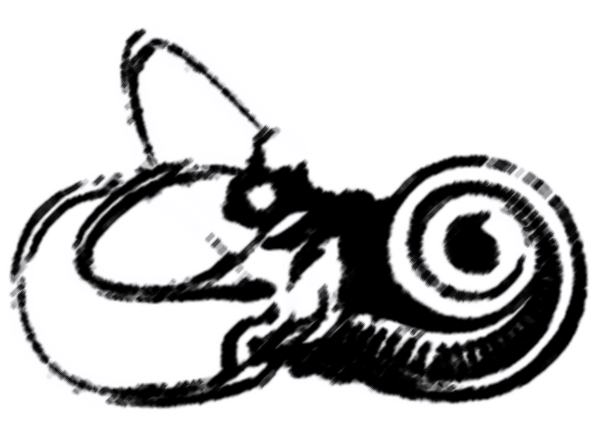
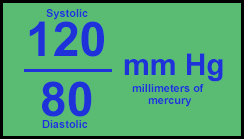
Interpreting Blood Pressure Readings 1
As mentioned above, blood pressure readings consist of two numbers: one for each stage of the heartbeat. These numbers are displayed like a fraction, with the systolic pressure as the numerator and the diastolic pressure as the denominator (see green box to the right). So the higher number is on top, like an improper fraction. It is read as "one-twenty over eighty." The unit of measurement is "mm Hg" and is pronounced "millimeters of mercury."
Below is a chart showing the ranges of normal and abnormal blood pressure (chart adapted from the American Heart Association).
| Blood Pressure Category | Systolic Value (Upper Number) in mm Hg | Coupling | Diastolic Value (Lower Number) in mm Hg |
|---|---|---|---|
| Normal | Below 120 | AND | Below 80 |
| Prehypertension | 120 - 139 | OR | 80 - 89 |
| Stage 1 Hypertension | 140 - 159 | OR | 90 - 99 |
| Stage 2 Hypertension | 160+ | OR | 100+ |
| Hypertensive Emergency | 180+ | OR | 110+ |
Note that the systolic values increase 20 mm Hg per category and the diastolic values increase 10 mm Hg per category. It is simply a matter of remembering "120/80 mm Hg" is the upper limit of normal and that the larger value (systolic) increases more per category (20 mm Hg) than the smaller diastolic value (10 mm Hg). With just a little background information, blood pressure readings are very intuitive and easy to remember.


How Blood Pressure Can Affect Balance
Orthostatic Hypotension 2
So why is blood pressure being measured in the balance clinic? One answer to this question is something called orthostatic hypotension. While this condition sounds intimidating, it's actually quite simple to understand. Let's first define the terms:
Now we have a transmogrified term: Low blood pressure caused by erect posture. Specifically, orthostatic hypotension is a drop in systolic blood pressure greater than 20 mm Hg or a drop in diastolic blood pressure greater than 10 mm Hg upon moving from laying/sitting to standing. This drop in blood pressure can occur just after standing, or even after several minutes of standing.
Common symptoms answer the question why blood pressure is often tested in the balance clinic:
- dizziness
- light-headedness
- weakness/fatigue
In patients complaining of dizziness or light-headedness after standing up quickly, simple history questions may be of some use in determining the cause. The common theme to the etiologies below involves an insufficient flow of blood to the brain. Should this lack of blood become too extreme, the result will be syncope, which is covered in the next section. Orthostatic hypotension has several etiologies, but some of the most common are:
- antihypertensive drugs
- reduced blood volume
- autonomic dysfunction
There are different types of high blood pressure medications, also known as antihypertensives. They can cause the heartbeat to slow and become less forceful (reducing the flow of blood) or keep the blood vessels open and unrestricted (the larger the diameter the slower the flow). So when a patient stands up quickly after sitting for a while, the heart does not have the requisite force nor do the vessels sufficiently constrict to provide blood to the brain quickly enough; the result is dizziness and/or light-headedness. Changing drugs and/or dosages can often relieve symptoms.
Reduced blood volume means not enough blood to go around after a sudden change in posture that requires a hasty redirection of blood to the brain. The etiologies behind reduced blood volume are not covered here, but increased salt intake and other dietary changes have been shown to increase blood volume.
The patient with autonomic dysfunction will not have a change in pulse in response to the hypotensive period. This is a failure of the autonomic nervous system to meet the needs of maintaining homeostatis. The use of elastic stockings can help prevent blood from pooling in the lower extremities.
Reduced Cardiac Output 2
Another way blood pressure can influence balance is through reduced cardiac output. This is common in older patients, and is often due to arrhythmia.
- Arrhythmia
- An alteration in rhythm of the heartbeat either in time or force. 3
Patients experiencing light-headedness, pre-syncope or syncope due to impaired cardiac output usually have a serious underlying heart condition (which is why this is most common in older adults).
- severe hypertension
- recurrent heart attacks
- congestive heart failure
- severe valvular disease
This may manifest as Stokes-Adams Syndrome, defined as "an abrupt, transient loss of consciousness due to sudden but pronounced decrease in the cardiac output, which is caused by a sudden change in the heart rate or rhythm."4
An EKG, coupled with physical examination, should identify most of the heart conditions listed above. A patient complaining of recurring episodes of light-headedness and/or syncope with a clean EKG should undergo EKG monitoring; this will aid in identifying intermittent arrhythmias that a normal EKG might not pick up.
Clearly there is no one-size-fits-all remedy, as there are several underlying cardiac conditions. Treatment is therefore specific to the underlying condition, although use of a pacemaker is often beneficial.


- Page References - Click the links below for full citations
- American Heart Association
- Clinical Neurophysiology of the Vestibular System (Third Edition)
- MedlinePlus Medical Dictionary
- Clinical Cardiology: The Stokes-Adams Syndrome—Definition and Etiology; Mechanisms and Treatment

